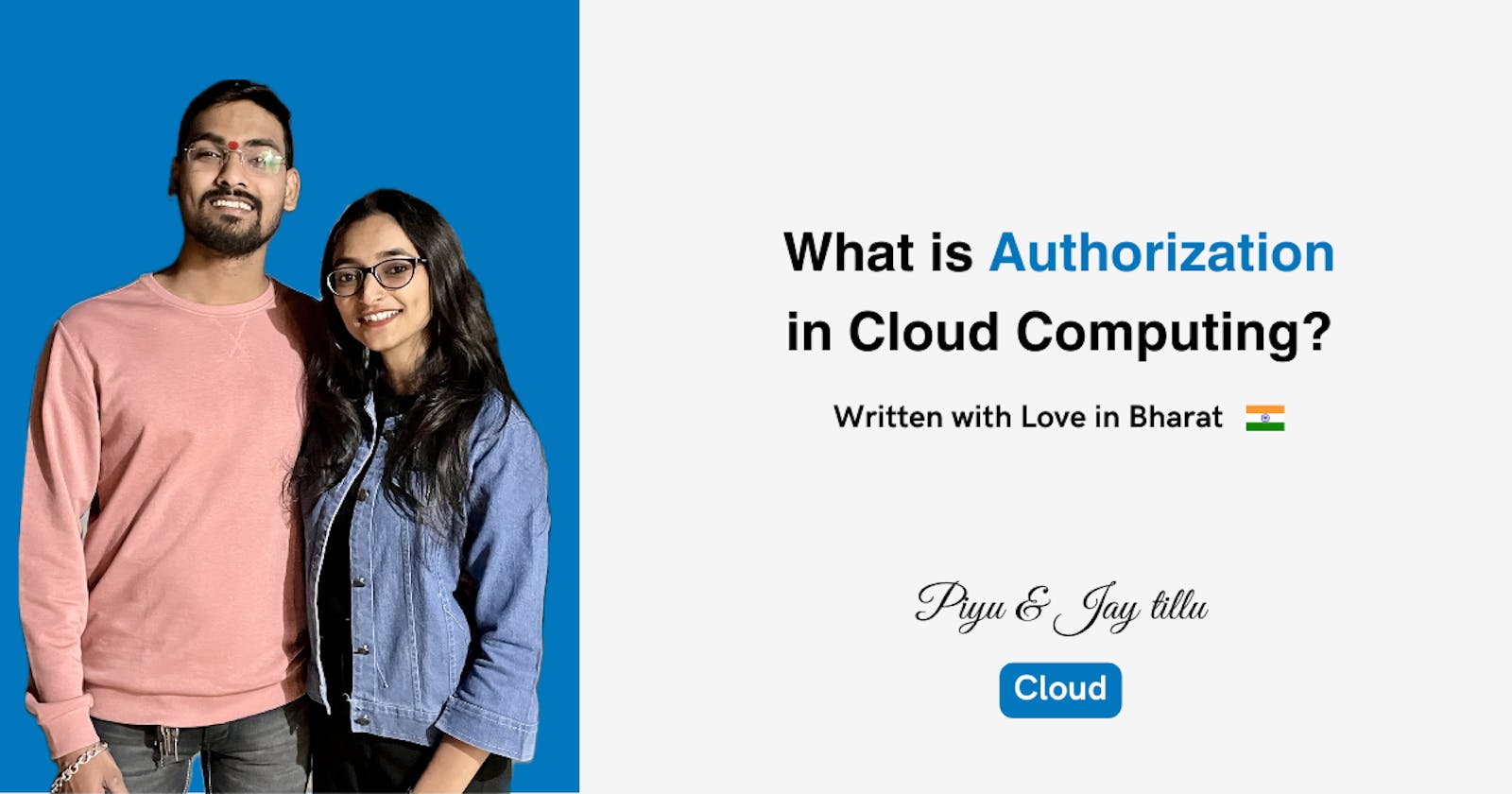What is Authorization in Cloud Computing?
Authorization is all about controlling who can do what in a system, application, or even in real-life situations.
Authorization is the process of granting or denying access to a resource or a set of resources. In the context of computer systems, networks, and information security, authorization ensures that individuals or entities are allowed to access specific resources based on their identity, permissions, and privileges.
Authorization is all about controlling who can do what in a system, application, or even in real-life situations. It's like a set of rules that determines what someone is allowed to access or perform. Let's break it down further:
Imagine it like this:
Authentication: Verifying someone's identity, like checking your Driving License on the road. You prove you're who you say you are.
Authorization: Granting or denying access based on your identity and your privileges. If you're 18+, you're authorized to drive the vehicle, while someone under 18 isn't.
In a digital world:
Authorization lets systems decide whether a user (or machine) should be able to:
Read files like documents or emails.
Edit or delete data.
Perform actions like sending emails or managing users.
Authorization is often part of a broader security framework that includes authentication, which verifies the identity of users or systems. Once authentication is successful, authorization controls what actions or resources the authenticated entity is allowed to access.
Key components of authorization
Access Control: This is about deciding who gets to use what and do what. It's like setting rules to say who can read, write, or execute certain things, like files or actions on a computer.
Permissions: These are the rules that say what someone can or can't do. For instance, a person might have permission to read a file but not change it.
Roles: Instead of giving permissions to each person, you put them in groups called roles. Each role has a bunch of permissions, so you only have to manage roles, not every single person.
Policies: These are like the rulebook. They say when someone can or can't do something. It might depend on the time, place, or what kind of information they're trying to access.
Token-based Access: Some systems use tokens like special passes. When you log in, you get a token that shows who you are and what you're allowed to do. The system then checks this token whenever you try to do something to make sure you're allowed.
Conclusion
Authorization is a crucial aspect of information security and is implemented in various domains, including operating systems, databases, web applications, and networked systems. Effective authorization helps protect sensitive information, maintain the integrity of systems, and prevent unauthorized access and misuse of resources.

